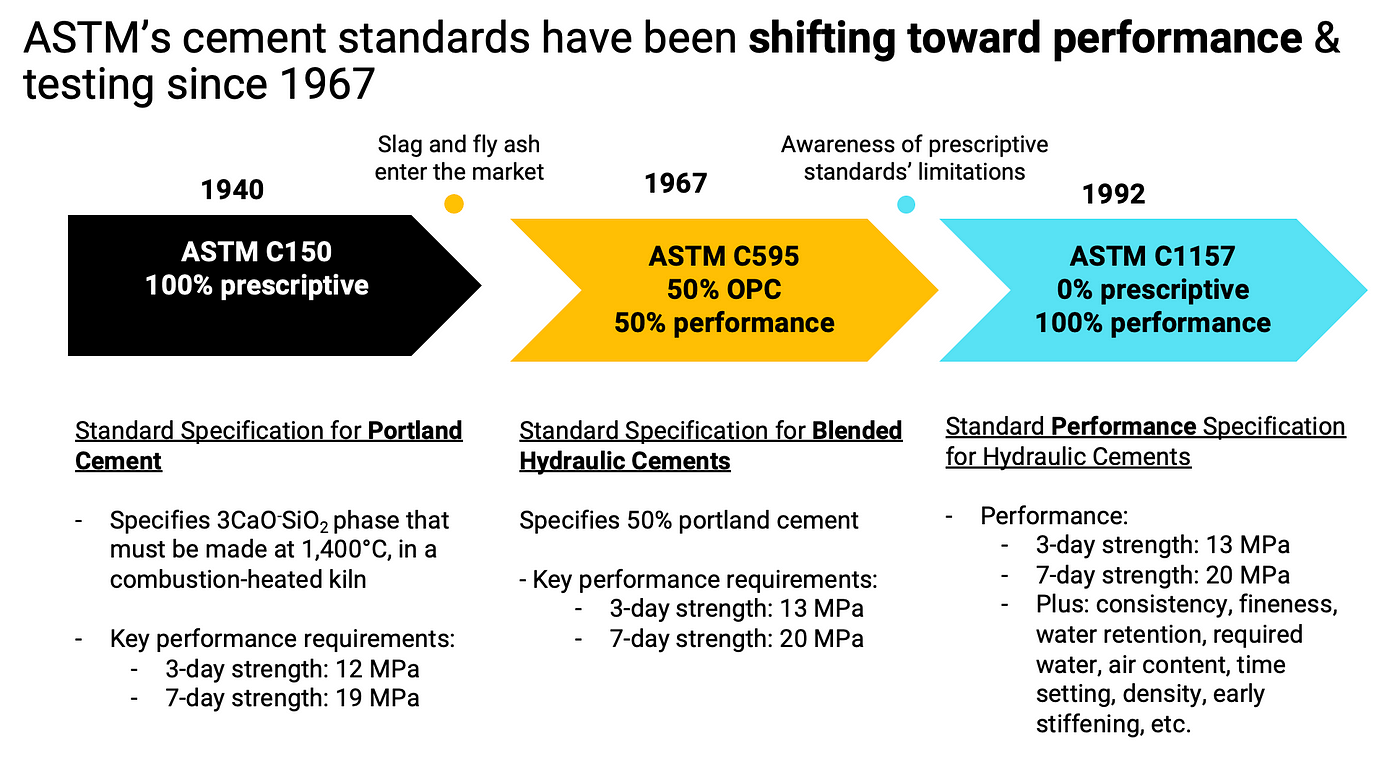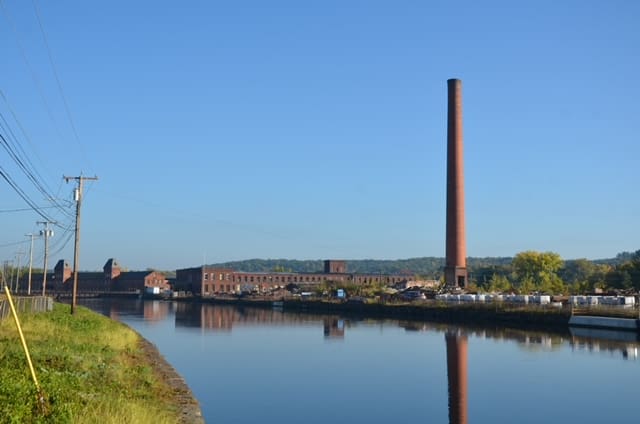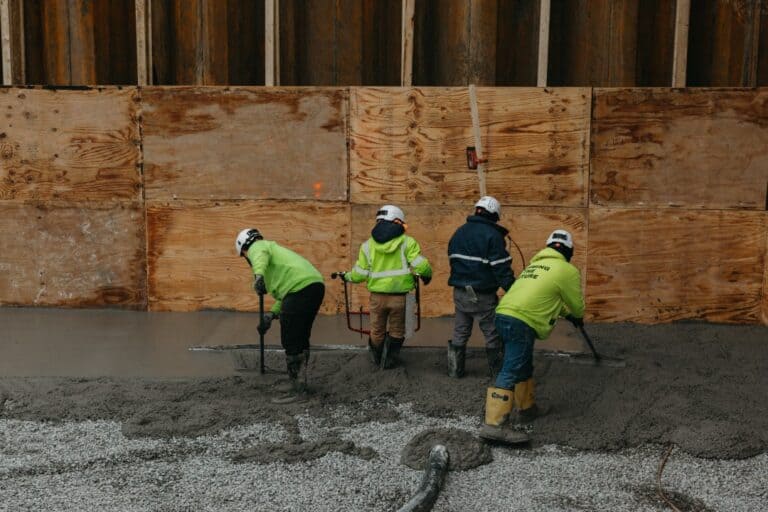Last you heard from us here, we told you about the audacious question that launched Sublime Systems: can you make zero-carbon cement?
We shared our initial hunch that breakthroughs in electrochemistry could be used to transform one of the most polluting industries on the planet. We hypothesized that we could replace the big kilns and fossil fuels necessary for producing traditional cement (OPC) with modern electrochemical systems. We sought to make cement that was at least as strong and no more expensive than the stuff flowing out of kilns today, while taking advantage of ever-increasing cheap renewable electricity to meet the world’s rising needs for the ubiquitous building material without spewing CO₂. Since that first, bold question, we’ve moved out of the MIT lab and are running a system that can produce >100 tonnes/year of strong, durable, cost-competitive-at-scale, clean cement from our lab in Somerville, MA.
Today we’re here to tell you how Sublime is leveraging one of the most important trends in the cement industry — the shift to performance-based standards — so that we can maximally decarbonize cement while minimizing the associated cost and complexity.
Our Sublime Cement™ recently met the ASTM C1157 Performance Specification for Hydraulic Cement. We wanted to explain why we’re confident that the pursuit of performance-based standards offers the clearest path to the fastest decarbonization of the cement industry, an industry that is responsible for 8% of global CO₂ emissions, releasing more greenhouse gases than all the passenger vehicles on the planet combined.
Performance-based standards like ASTM C1157 emerged 30 years ago and have since been incorporated into the International Building Code.
Its use has gained attention as the pressure to decarbonize mounts because it allows cement to be defined by its strength, flow, set time, and durability — how it performs in concrete and all the buildings and structures that need it to be strong and safe for decades and centuries to come.
When we first started, we believed the myth that traditional OPC was the only cementitious material industry would accept.
Our first peer-reviewed paper even envisioned our system hooking up to an OPC kiln. It’s possible that fear, uncertainty, and doubt (FUD) around non-OPC cements has long been spread by those with a business interest in making OPC and those with trillions of dollars invested into today’s CO₂-belching kilns. However, resistance is dissipating as regulations, particularly in the EU, are encouraging cement majors to reduce the amount of OPC blended into their cement, thus pushing the trend towards performance-based definitions of cement.
We chose to abandon the OPC route to cement in 2019, before spinning out of MIT, after doing technoeconomic analyses, feasibility studies, and — most importantly — meeting customers. We decided that making OPC was not a way to have a deep and enduring impact on global CO₂ emissions. At best, you can make a “net” zero OPC using carbon capture, but because OPC requires a 1,400°C combustion-heated kiln, getting to true zero is much more difficult. Instead, we decided to apply our carbon-avoiding technology towards the development of a cement that could be formed at ambient temperature, without the need for fossil fuel or carbon capture.
Customers don’t care about chemical composition of the cement they buy and use.
In 1992, the American Society for Testing and Materials (ASTM International) created C1157, Standard Performance Specification for Hydraulic Cement to allow flexibility in the formulation of cement without compromising the performance or risk.
We have yet to hear our customers talk about alite, belite, di- or tri-calcium silicate (the chemical constituents of OPC that legacy standards specify). Instead, they talk in terms of psi, water-to-cement ratio, slump, sulfate resistance, and alkali silica reaction. Ask any ready-mix QA/QC professional and they’ll tell you: Prescription does not assure performance.The National Ready Mixed Concrete Association (NRMCA) and the American Concrete Institute (ACI) have conducted considerable research to suggest that improper use of the original prescriptive requirements such as ASTM C150 often results in poorer concrete quality, poorer sustainability impacts, and higher costs.
Leading industry bodies, including the NRMCA and Structural Engineers 2050 (SE2050), list the adoption of ASTM C1157 among the top-10 ways of reducing embodied carbon in cement. ASTM C1157 is a standard that has specific requirements for several classes of cement including general use, high sulfate resistance, and low heat of hydration, among others.

Today, the easiest and fastest way to reduce CO₂ emissions from cement is to use supplementary cementitious materials (SCMs) in blended cements.
The ACI and NRMCA assert that 85% of concrete specifications include unnecessary restrictions on SCM quantity, 73% of concrete specifications include unnecessary or over-designed maximum water-to-cementing materials requirements, and 46% of specifications invoke a minimum cementitious content requirement. For these reasons, the industry is already moving away from OPC (specified under the prescriptive standard, ASTM C150) and towards performance-based standards to rapidly incorporate these newer materials in early decarbonization efforts. The Prescription to Performance (P2P) initiative by the NRMCA was created to develop and encourage implementation of performance specifications.
For example, a significant shift away from prescriptive standards has taken place in the past three years as cement majors switch from selling pure OPC to blended “Type 1L” cements, (often referred to as “portland-limestone cement” or PLC). Type 1L cement has essentially the same performance characteristics as OPC, but it is specified under ASTM C595, Standard Specification for Blended Hydraulic Cement, a quasi-performance-based standard. This standard allows for a much wider range of compositions than C150, and instead relies more on performance criteria that the cement must meet. Increased adoption of Type 1L cement is making the ASTM C150 standard go the way of the dodo: ASTM C150 will soon disappear from structural engineers’ specifications as the entire industry shifts to blended cements.
The wholesale adoption of blended cements in the past two years is proof that the cement industry is moving swiftly and massively away from prescriptive composition-based standards.
For example:
- Heidelberg Cement, the second largest cement company in the world, recently rebranding themselves as Heidelberg Materials to reflect their commitment to decarbonization and alternative cementitious materials.
- Titan America fully switched to Type 1L in Nov 2022
- Buzzi Unicem USA and Alamo Cement Company switched entirely to Type 1L in Feb 2023
- Argos to produce Type 1L at all their facilities by 2023
- Holcim, the largest cement producer in the US, fully converted nine plants to Type 1L production, including its Ste. Genevieve plant that produces 4.5 Mt./y (the largest cement plant in North America)
- Cemex, CalPortland, and others have also switched plants to Type 1L
Although Type 1L cements only reduce CO₂ emissions by about 10% compared to OPC, their rapid adoption is encouraging even more flexibility in composition, which is required to reach true-zero carbon cement. That’s why industry leaders are shifting further towards performance-based standards and adopting C1157, the fullest performance-based standard. C1157 offers the most flexibility in cement composition but also has highly stringent performance requirements compared to C150 and C595. Our strategic investor Siam Cement Group, the oldest and largest cement producer in Thailand and SE Asia, has already fully adopted ASTM C1157.
It’s not just the majors who benefit from these shifts. A number of companies are developing novel SCMs from leached basaltic rocks, and these SCMs alone don’t meet today’s prescriptive standards. Rapid adoption of performance-based standards means these innovations can enter the market and displace carbon-intensive OPC faster and with less friction. The bottom line is that change can be swift and massive with performance-based standards. It’s already happening.
Ultimately, solving for performance — not chemical composition — gets to the heart of the matter: the need for a performant, low-carbon building material for the future.
By defining cement by its performance and not its crystal structure, innovators are unleashed to solve the right problem. There is a lot left to do to make this successful, but displacing outdated prescriptive requirements with performance-based ones will rapidly remove roadblocks for decarbonization of the largest industry in the world by mass. We shouldn’t be constrained by standards that prescribe materials that can only be made with fossil-fueled kilns. There is a better way, and the industry knows it.



